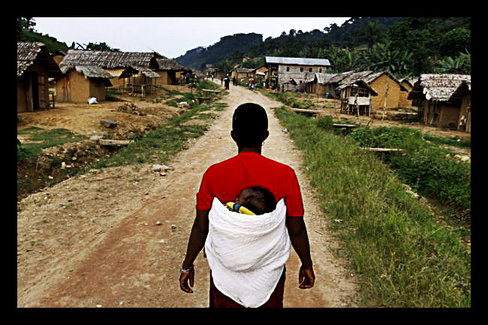
This is the fifth in a series of posts focusing on the UN’s Millennium Development Goals. There are eight interconnected MDGs that were agreed upon by over 180 countries worldwide. These goals are to be achieved by 2015 and are based on a shared pledge to improve the social, economic, and political lives of all people. Two years out from the goal date, it’s time to consider how far we have come, as well as how much work we have left to do.
The fifth MDG is to improve maternal health. This goal comes in two parts:
- Cut the maternal mortality ratio by two-thirds between 1990 and 2015
- Achieve universal access to reproductive health
Significant progress has been made on both fronts. In 2010, the maternal mortality ratio was 47% of the 1990 figure. Three regions (Eastern Asia, Northern Africa, and Southern Asia) have already reached the two-thirds reduction goal, and progress has been made in every region. However, women in sub-Saharan Africa still have a 1 in 39 chance of dying from pregnancy complications, and improvements in many regions will need to accelerate substantially if the MDG is to be met by 2015.
Work towards universal access to reproductive health has made encouraging headway as well. Health care for pregnant women in developing countries is on the rise, with antenatal care increasing by almost 20% between 1990 and 2011. This reflects an admirable commitment to women’s health care in developing regions. In a reflection of changing cultural norms, the number of teenage mothers is decreasing in most developing regions, though progress on this front has slowed in recent years.
Despite the progress that has been made thus far, maternal mortality still bears the highest disparity between developed and developing countries, with 99% of maternal deaths occurring in poorer nations. The maternal mortality ratio in developing areas remains 15 times higher than in developed regions. This severe inequality points to the undeniable connection between poverty and maternal health.
The primary cause of maternal deaths in the world today is the lack of skilled health care before, during, and after delivery. Women in developing areas are seeking maternal care at an increasing rate. It is therefore absolutely vital that the care they receive is of excellent quality. Doctors must be trained, facilities must be built, and supplies must be provided in order to save the lives of these women and their children.
Women and their partners are also seeking family planning services in higher volumes. Meanwhile, the supply of these services is increasing only minimally. Family planning must be prioritized in order to meet this need. It has been estimated that fulfilling the unmet demand for family planning could cause the number of maternal mortalities to plummet by one third. Impressive progress in this area was made in the 1990s when contraceptive use in developing countries increased by almost 10%. However, this level of progress was not matched in the 2000s.
Improvements in contraceptive use, especially in developing areas, would reduce one of the leading causes of pregnancy-related death: unsafe abortions. Approximately 13% of pregnancy-related deaths can be attributed to unsafe abortions, which kill 68,000 women annually. In another example of the disparity between developed and developing nations, 97% of unsafe abortions occur in poorer countries. Preventing unsafe abortions, both by increasing knowledge and use of contraceptives and by providing adequate health care in developing countries, is absolutely necessary as we work towards improving maternal health.
The quality of maternal health care will also rise when women are more empowered. Women worldwide are often constrained by cultural norms that leave them disenfranchised. They suffer physical and sexual violence at alarmingly high rates and are often unable to hold positions of power in society. The appalling state of maternal health in many countries can largely be attributed to societal injustices against women. When such countries work towards gender equality, they will also improve maternal health.
It is important, however, to remember that maternal health isn’t just a women’s issue. Poor sexual and reproductive health is a significant contributing cause to poverty worldwide and can prevent victims and their families from fully participating in society. Furthermore, improving maternal health entails more than just providing skilled birthing assistance. Women are less likely to have pregnancy complications if they do not have sexually transmitted infections (STIs) and if they have not undergone female genital mutilation. Therefore, improving maternal health necessitates the enhancements of society as a whole. These include increasing the general public’s knowledge of and access to sexual and reproductive health care, including contraceptives and treatment for STIs.
There are copious reasons to improve developing nations’ maternal health. Poor maternal health is a human rights violation, killing roughly 250,000 women each year. It harms countries’ economies and social fabric by preventing people from fully participating in society. It contributes significantly to poverty. It contributes to the perpetuation of gender inequality. And, as we have seen, improvements can clearly be made. The world has made so much progress when it comes to maternal health. These achievements should be used as a springboard, inspiring us to keep working towards the fifth MDG up to and beyond 2015.
– Katie Fullerton
Sources: UN UN Economic and Social Affairs WHO MDG5
Photo: Flickr






